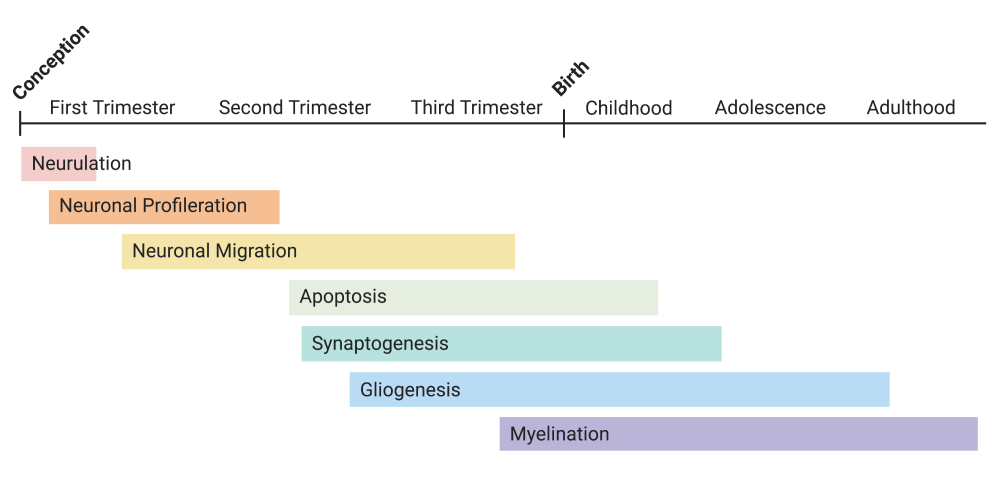
Neurodevelopmental Disorders: Genes Don’t Determine Everything
Neurodevelopmental Disorders: Genes Don’t Determine Everything
by Bianca Yaghoobi
Scientists are still actively trying to understand neurodevelopmental disorders, but one thing has become clear: Genetic markers are not the only factors influencing their risk.
As the development and distribution of effective vaccines against SARS-CoV2 (COVID-19) is underway worldwide, experts warn of anti-vaxxers’ influence and power potentially affecting Americans’ willingness to take a COVID-19 vaccine. Vaccine refusal was growing before the pandemic, contributing to last year’s U.S. measles outbreak. The most frequent misinformation shared by anti-vaxxers is the claim that vaccines cause autism. Importantly, the studies cited by such proponents are critically flawed and there is overwhelming consensus within the scientific community that there is no credible evidence that vaccines cause autism. This misinformation has once again placed a spotlight on a disorder that is still heavily researched to understand its biological causes. Although there are many questions left unanswered on the cause of autism, the scientific community now overwhelmingly does agree that there are in fact environmental factors (not including vaccines) that can potentially lead to autism spectrum disorder (ASD) and should be further examined.
Paradigm Shift
ASD belongs to a group of disorders affecting brain function via impaired growth and development of the nervous system called neurodevelopmental disorders (NDDs). Other examples include attention-deficit/hyperactivity disorder (ADHD), schizophrenia, learning and intellectual disabilities, and sensory impairments. Until recently, research into causes of NDDs has largely focused on inheritable genetic factors. However, this research has clearly shown that even for ASD, which is considered one of the most heritable NDDs, inherited genes cannot account for all cases of ASD. Findings in monozygotic twin studies have consistently reported incomplete concordance of both ASD and ADHD, meaning that individuals carrying ASD- or ADHD-linked genes do not always express phenotypes linked to the disorders. This suggests non-genetic factors are also important in determining NDD risk.
Interestingly, over the past several decades, the prevalence of ADHD and ASD in children has increased dramatically. While the reasons for this trend are still controversial, it is unlikely caused by evolutionary shifts in the human genome. Explanations include changes in diagnostic criteria, reporting methods, and increased social awareness. However, studies show that these changes can only partially account for the increased prevalence of NDDs and that environmental factors could be attributed to more than half of the cases. Such observations have contributed to a major paradigm shift such that many NDDs are now largely thought to result from complex gene-environment interactions.

Neurodevelopmental disorder (NDD) risk factors.
Environmental Factors
Environmental factors include a multitude of interactions of an organism with its environment. In the context of NDDs, the focus is largely on factors influencing development prior to conception, during pregnancy, and the time following birth. Factors to consider are food, pollutants, parasites, temperature and can also include light, sound, and even population density or other stressors. The developing organism does not necessarily have to be directly exposed to a specific environmental factor, but can be indirectly exposed through the mother either before conception altogether or during the postnatal period via breastmilk, for instance. Further, the timing of exposure is key in this context as well. Neurodevelopment is a complex, dynamic process that involves a precisely orchestrated sequence of events. Perturbation of a specific genetic, environmental, biochemical and physical event can lead to irreversible alterations that translate to a specific phenotype. It also means that the developing brain is more vulnerable to certain environmental insults during a specific developmental period, while it is more resilient to that same insult during a different developmental period.

Timeline of human brain development.
Among the first reports demonstrating that an environmental factor could influence NDD risk are the observations by Dr. Stella Chess in the 1970s, where she noted a high prevalence of autism in children with congenital rubella. Subsequently, other prenatal infections were linked to an increased risk for other NDDs and other non-genetic factors contributing to NDD risk were expanded to include maternal nutrition and metabolic status, endocrine disruption, and increased paternal age. The first evidence that chemical exposures may also influence NDD risk were accounts of in utero exposure during the first trimester to valproic acid or thalidomide increasing prevalence of autism-related traits. Epidemiological studies investigating maternal medication or drugs of abuse contributing to increased NDD risk followed as well as investigation into other environmental chemicals the child might be exposed to pre- or postnatally. The latter category includes a broad range of chemicals that is still expanding and includes legacy chemicals known to be toxic to the developing human nervous system, such as lead, mercury and polychlorinated biphenyls (PCBs).
Challenges to Overcome
Although epidemiological studies support the hypothesis that chemicals in the human environment contribute significantly to NDD etiology, they also highlight the difficulty of establishing causal links between environmental factors and NDDs. Challenges of using epidemiological studies to identify environmental risk factors include obtaining accurate measures of exposures, particularly for chemicals with short half-lives, controlling for confounding factors, especially socioeconomic stressors, which are known to influence neurodevelopment independent of chemical exposures, and dealing with multiple exposures, a significant issue in the light of these stressors co-existing. Other challenges include the known heterogeneity of phenotypes of NDDs and their complex multigene etiologies that will likely lead to a range of sensitivities to environmental factors, further complicating or even masking associations.
To overcome these challenges, resources need to be invested into mechanistic research, including the use of genetically manipulated cells or animal model system to study the pathways involved. The acquired understanding of the molecular mechanism underlying complex disorders may be used to inform and focus epidemiological studies. Clearly, given the amount of evidence supporting a significant contribution of modifiable environmental factors to NDD risk, in contrast to currently irreversible genetic risks, it is clear that the search for environmental factors should be reinforced.
Images in this post have been created with BioRender.com
